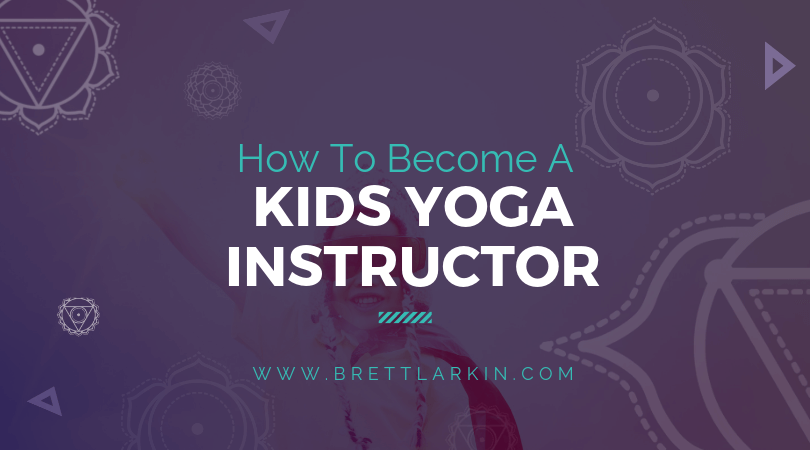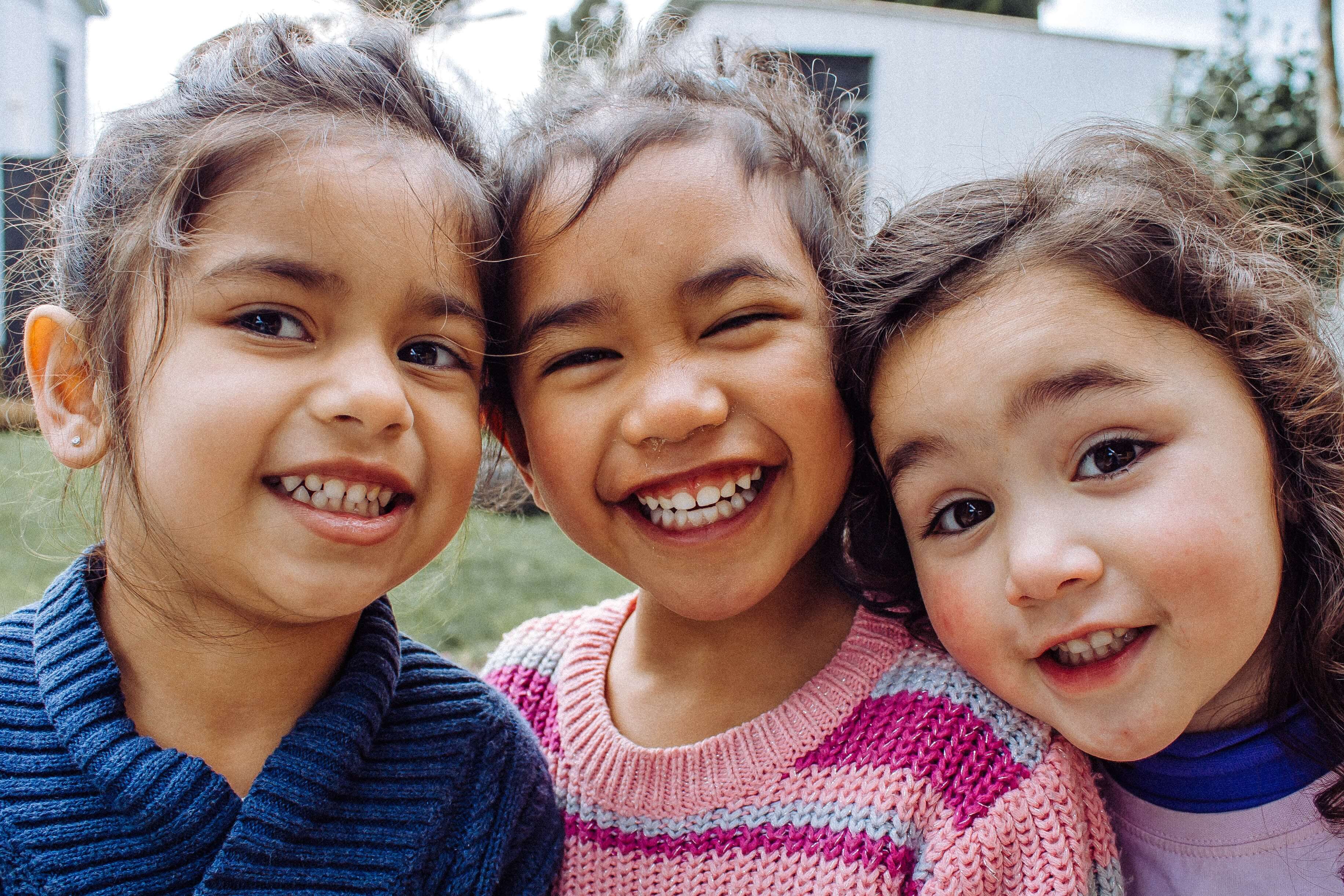
Yoga teachers old and new may want to consider catering to a new audience…kids!
Maybe you are a new instructor full of inspiration and energy. Or perhaps you’re a seasoned instructor who’s lost their fire. Teaching kids yoga might give you that spark you need to reignite your passion.
Children are these incredible little humans full of playfulness, hope, and love. It’s hard not to get inspired and feel like a kid yourself when you spend time around them, especially in such a fun environment like children’s yoga classes!
By nature, kids are flexible, playful and aren’t afraid to experiment and try something new. Their flexible little bodies have no problem getting into new poses. I mean, think about the names of some of these yoga postures…‘happy baby?’
But it’s not just their bodies that are flexible, their minds are flexible as well. At this stage of life they are learning and taking in everything around them.
It’s true!
It’s not so hard to teach yoga mindfulness to kids because they are already so in the moment, paying attention to every little thing around them.
Honestly, you have more to gain as a yoga instructor by teaching kids yoga than perhaps the kids do!
Childhood is the perfect time to teach things like mindfulness and compassion. Starting kids on a yoga journey early on can build a foundation and give them these tools to take with them off the yoga mat and through their lives.
That being said, what kids have in flexibility, they tend to lack in focus. I think we can all agree that getting a room full of children to sit and listen is no easy task, which is why yoga for kids is especially helpful for classroom management.
This is where yoga can really be beneficial. On one hand, yoga encourages flexibility and playfulness. On the other hand, they will be taught to focus and calm the mind.
In today’s modern world, with screens constantly in their faces, I think kids need yoga now more than ever.
What is Kids Yoga, Exactly?

Kid’s yoga is a modern form of yoga that was created and adapted for children. It teaches the postures and some philosophy of traditional hatha yoga but incorporates games, songs and stories.
The best part?
Yoga for children is not just beneficial to their health and well-being. It’s also extremely beneficial to their overall cognitive development.
It’s true! Current research suggests that movement and sensory experiences are what facilitate continuous brain development, making it a hot topic among child development professionals. Teaching focus and breathing exercises can be calming and help the brain build connections that ultimately help with emotion regulation and social awareness. The practice of yoga is also beneficial to kids with learning disabilities.
Because yoga is an individual practice, it is non-competitive. This encourages kids of all strengths and abilities.
The small, soft-spoken child doesn’t have to feel intimidated and may actually feel more empowered with the practice of yoga.
Sounds pretty good, right?
Well, luckily you can contribute to this beautiful movement by getting your yoga certification in kids’ yoga.
You might also like: Levels of Yoga Certification: What The Heck Is The Difference Between 200-, 300-, and 500-Hour YTT Courses?
Where to Get Your Certification to Teach Children
Teaching yoga to kids will obviously be a lot different than teaching to adults. You need to develop a whole different set of skills and change your approach. The method of teaching will be more playful, incorporating songs and stories to make it more engaging for children.
Yoga for children is definitely a more hands-on experience than being a yoga instructor in a traditional yoga studio.
There are plenty of options out there to learn how to best teach to children. If you want to become a Registered Children’s Yoga Teacher (RCYT) through the Yoga Alliance, you need to have at least a 200-hour yoga teacher certificate as an RYT and complete an additional 95-hour training through a continuing education certification program.
In addition to the 95 hours of training, you need to have at least 30 hours of teaching experience in children’s yoga before you can be certified.
More experienced teachers will know that every three years the Yoga Alliance requires a certain number of continuing education units (CEU) in order to renew your certification. A kid’s yoga training would count towards this.
There are both in-person and online trainings to choose from. Depending on your schedule, budget and needs, you should be able to find a training program that is right for you.
Either way, children’s yoga certification program will likely include:
- Teaching methodology for working with children of various age groups
- A basic understanding of the developmental stages of early childhood
- How to teach yoga to both children and families
- Mindfulness techniques that can be used specifically with children
- Breathing techniques that can be used in a kids yoga class
- A review of anatomy and physiology as it would be used to teach kids
While each continuing education course or certification program will vary, the actual certification requirements to become an RCYT will include the 95 hours towards education and 30 hours towards teaching experience.
You might also like: 5 Steps to the Perfect Yoga Instructor Resume So You Can Make That Monayyy
Kids Yoga Training Immersion
An immersion program could be anywhere from 3 – 12 days, but all of them will include the 95-hour minimum. For those who have the time to put everything aside and focus on yoga, an intensive teacher training program is a great option.
Just like with other yoga styles, these trainings take place all around the world. If you have the time and the budget, why not do your training in Europe or on a tropical island?
An immersion program isn’t limited to yoga instructors though. It could be used simply as a workshop to learn how to cater and teach to kids. Anyone who works with children would benefit from this. Educators, daycare workers, social workers, even parents and grandparents might find it useful.
Children’s Yoga Teacher Training Online
As I’ve mentioned in my other posts, online is a great forum to get your yoga teacher certificate. Many of them contain interactive components and have live support from the instructor.
The self-paced learning format works great for some people. You will be taking in a lot of information, so being able to go back and review certain things could definitely be a benefit.
The length of the online trainings can vary. Some of them work like an immersion and include the 95-hour minimum. But, some are more in-depth and include the full 200-hours needed for yoga teacher certification.
Many people considering a specialized training might already be working with kids, which makes a flexible program perfect. Even before you complete the training, you can start to apply some of the techniques that you learn.
Teaching yoga to children may seem challenging at first, but it is just taking a different approach than you might take in a regular yoga studio. But it’s a wise professional move as a yoga instructor as research continues to show its positive impact on child development. Parents, educators, and social workers alike will be searching for children’s yoga classes and mindfulness for children. Not only that, but school teachers will also be expected to learn certain yoga and meditation practices that they can bring to their classroom and lesson plans.
Plus, it’s also just a lot of fun.
Teaching to children is sure to be rewarding. After all, kids tend to teach us just as much as we teach them.
So are you ready to become a kids yoga teacher? Or have you ever taught yoga for children? Let me know in the comments!
Experience 3 Training Videos from Inside My 200-Hour Online YTT

YOU MIGHT ALSO LIKE
- What is Yoga Alliance and Do I Need an RYT Certificate to Teach Yoga?
- 200 Hour Yoga Teacher Training: What To Expect, How To Prepare, Where To Do It
- Is An Online Yoga Teacher Training Worth The Investment?
- Levels of Yoga Certification: What’s The Difference Between 200-, 300-, and 500-Hour YTT Courses?yoga certification
- What Does A 500 HR Yoga Teacher Training Course Cover? Standards and Benefits
- A Guide to The Best Yin Yoga Teacher Training Programs
- Hatha Yoga Teacher Training Certification: Immersion, Online, or in Studio?
- Wanna Teach Kids Yoga? Find A Fun Childrens Yoga Teacher Training!
- Ashtanga Yoga Teacher Certification: Where And How To Get It
- How To Know If An Online YTT Is Legit: 8 Things To Look For
- Want to Become a Certified Vinyasa Yoga Teacher? Read This.
- How to Choose a Yoga Teacher Training (That Won’t Rip You Off)
- 10 Signs You’re Ready For A Yoga Teacher Training This Year
- 10 Truths About Becoming a Yoga Instructor (That Nobody Talks About)
- Are Online YTT Courses Now Approved By Yoga Alliance? It’s Complicated.
- What Is The Difference Between Yoga Instructor And Yoga Teacher?
- The 5 Best 300 Hour Yoga Teacher Training Courses EVER
- How to Choose a 300-Hour Yoga Teacher Training Course (And Why)
- Yoga For Runners: 7 Poses That Will Help You In The Long Run
- Yoga Nidra Training Certification: Immersion, Online, Or In Studio
- What To Consider When Taking a YTT While Pregnant
- Am I Qualified to Teach After Taking a 200 Hour YTT?
- Can I Teach Yoga If I’m Overweight?
- How Many Hours Do You Need to be Certified by the Yoga Alliance?
- What Topics Does a Yoga Alliance-Certified Training Cover?
- Can I Do a YTT If I Have An Injury? 9 Tips for Doing it Right
- Can a Beginner do a Yoga Teacher Training?
- 8 Reasons It Doesn’t Have to Be Hard to Become a Yoga Teacher
- Pregnant? To Teach or Not To Teach
- Do I need to use Sanskrit to Teach Yoga? 13 Reasons You Should
- How Long Does Yoga Alliance Certification Last? 5 Steps to Maintain It
- How Much Do Yoga Teacher Trainings Cost?
- How Long Does It Take To Be A Yoga Instructor?
- How Long Should You Do Yoga Before Teacher Training?
- 11 Embarrassing Sanskrit Words Yoga Teachers Get Wrong








